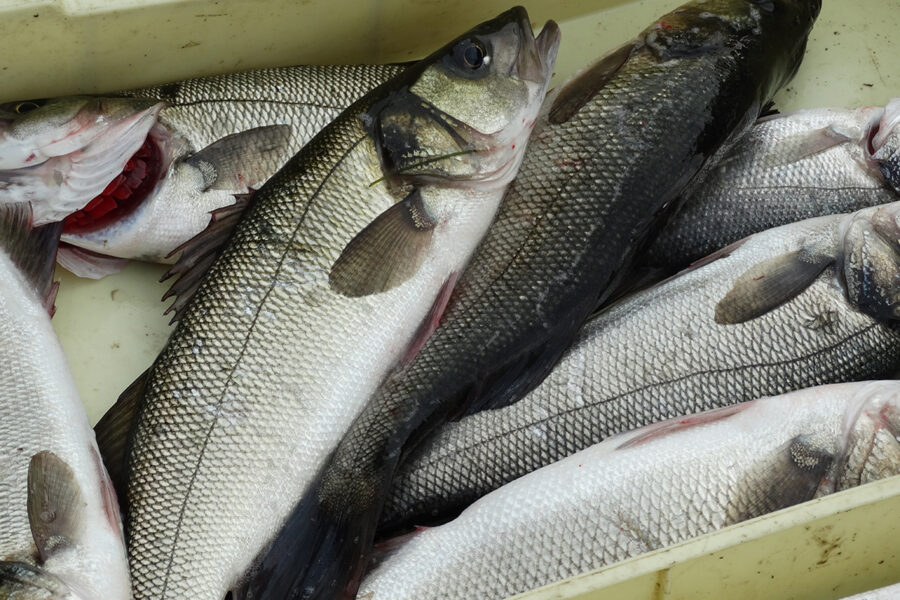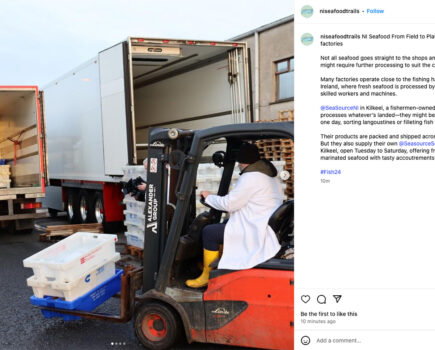Bass, Celtic Sea and west of Scotland problems.
UK and Irish fishermen will have more quota for most species in 2018, following last week’s Fisheries Council, reports Tim Oliver.
But there are cuts in some important species on the west coast of Scotland, the Celtic Sea and on bass.
And while industry leaders broadly welcomed the outcome of the talks, some warned that the EU took a hard line that did not bode well for the post-Brexit negotiations on quota shares and access.
Increased North Sea quotas agreed at the earlier EU/Norway negotiations were confirmed (Fishing News, 14 December) and there were increases for some important Irish Sea, South West and Channel TACs.
Scottish leaders generally welcomed the outcome, but there are concerns over some west coast and pelagic quotas.
DEFRA said total fishing opportunities worth more than £750m were agreed at the Council. The North Sea and Irish Sea did well out of the deal and there were some notable increases in other areas. But there were further restrictions on bass fishing, and in the Celtic Sea there were cuts in haddock, whiting, megrim and herring.
The west coast of Scotland was hit by a 26% cut in the crucial prawn quota and there remains only a small cod by-catch quota.
Increases include:
■ North Sea: cod +10%, haddock +23%, monkfish +20%
■ Irish Sea: cod +377%, haddock +55%
■ Eastern Channel: sole +25%, skates and rays +20%
■ Bristol Channel: plaice +49%, sole +9%
■ Celtic Sea cod: +11%
■ Western skates and rays: +15%
UK fisheries minister George Eustice said sustainable policies were yielding results in the recovery of some key stocks. But challenges remained in areas like the Celtic Sea, where further restrictions were needed. There are also tougher controls to save ‘critically endangered’ eels, said DEFRA.
NFFO chief executive Barrie Deas said the result was ‘a mixed bag’. “The big picture is that the TACs followed the overall positive stock trends, but the biggest downsides were in the Celtic Sea mixed fisheries and bass,” he told Fishing News.
The Council finished very late on Tuesday morning and much of the delay in the early hours was due to difficulties in agreeing Celtic Sea and bass issues.
One problem for the UK delegation was that the talks had been dominated by the Commission’s ‘determination to the exclusion of all else’ to bring all stocks to MSY levels by 2020.
The UK had argued for the application of the ICES mixed fisheries advice model in the Celtic Sea fisheries, that uses a range of fishing mortality options rather than fixed points to achieve MSY. This allows flexibility and helps to reduce discards. But the Commission had stuck with its fixed MSY targets, resulting in cuts to haddock and whiting, alongside an increase in cod.
He said it was ‘very frustrating’ because fishermen in the South West had been working throughout the year with scientists and in the Western Waters Advisory Council, on ways to manage the mixed fishery and reduce discards, while maintaining progress towards MSY. But the Commission had disregarded all that work, and had gone for the fixed target MSY approach.
He said the Celtic Sea problems were partly a relative stability issue and partly that the assessments weren’t in line with fishermen’s experience on the grounds.
“There are acknowledged weaknesses in the assessments, and that’s why the work was going on in Cornwall, but the Commission don’t seem to be able to work collaboratively with the industry,” he said.
He said it was also ‘a paradox’ that in the last full year in the run up to the full implementation of the landing obligation in January 2019, the landing obligation had been a low priority. “Reducing the by-catch on bass, for example, can only increase discards, and the same with species in the Celtic Sea.”
The European Commission said the deal will bring 53 TACs to MSY levels in 2018, nine more than in 2017.
Fisheries Commissioner Karmenu Vella welcomed the outcome: “We are now more than half-way to the 2020 deadline to ensure that all stocks are fished sustainably. With today’s agreement two-thirds of fish in the Atlantic and the North Sea will be subject to sustainable catch limits next year.
“I would like to pay particular tribute to our fishermen, who year by year undertake considerable efforts. Each year, we move closer to our objective of sustainable fisheries and this will bring substantial long-term reward.”
The agreement is worth over €5 billion, benefiting more than 50,000 fishermen, said the Commission.
The negotiators agreed that two-thirds of fish in the North Sea and Atlantic fisheries will be subject to sustainable catch limits next year.
2018 quota allocations and more Council coverage on pages 4, 5 & 6. Further industry responses will be included in next week’s double issue of Fishing News, 28 December-
5 January.
Read more news from Fishing News here.








